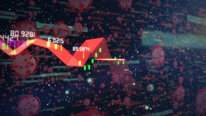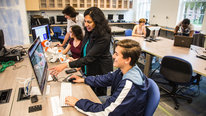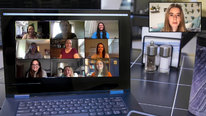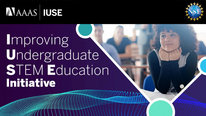- Michelle Friend
- https://www.unomaha.edu/college-of-education-health-and-human-sciences/teacher-education/about-us/directory/michelle-friend.php
- Assistant Professor
- Undergraduate Service Learning Experiences with Data: Mathematics in the Community
- University of Nebraska Omaha
- Ali Al-Ghaithi
- https://www.linkedin.com/in/ali-alghaithi/
- Graduate Assistant
- Undergraduate Service Learning Experiences with Data: Mathematics in the Community
- University of Nebraska Omaha
- Becky Brusky
- Instructor
- Undergraduate Service Learning Experiences with Data: Mathematics in the Community
- University of Nebraska Omaha
- Julie Dierberger
- Paul Sather Distinguished Director
- Undergraduate Service Learning Experiences with Data: Mathematics in the Community
- University of Nebraska Omaha
- Betty Love
- Professor
- Undergraduate Service Learning Experiences with Data: Mathematics in the Community
- University of Nebraska Omaha
- Mahbubul Majumder
- Associate Professor
- Undergraduate Service Learning Experiences with Data: Mathematics in the Community
- University of Nebraska Omaha
Public Discussion
Continue the discussion of this presentation on the Multiplex. Go to Multiplex












Mesut Duran
Professor of Technology
--Loved how data literacy and visualization topics are integrated into the service-learning course. Some more info about student demographics would be helpful. Thanks, Mesut
Ali Al-Ghaithi
Michelle Friend
Assistant Professor
What kind of student demographics are you interested in? The class has a fairly even mix of male and female identifying students, very few are first-year students, and they are from a range of majors that are mostly non-STEM majors.
Mesut Duran
Professor of Technology
I was wondering if minority students were part of the mix. Thanks, Mesut
Ali Al-Ghaithi
Becky Brusky
Instructor
Hello Mesut, Thank you for the interest in the Service-Learning and diversity in our new class. This General Education class is offered to all students and UNO. The students that have selected this class do have a diverse backgrounds and this adds to the authenticity of classroom discussions. At first the students are just working on a project, but as they start to realize that they are playing a vital role in their own community, it becomes more than just a project.
Ali Al-Ghaithi
Alexander Rudolph
Professor of Physics and Astronomy
This course is an innovative way to engage students in math through service learning. How much work is involved in identifying projects and how scalable is this approach?
Ali Al-Ghaithi
Julie Dierberger
Paul Sather Distinguished Director
Hi Alexander, thank you for your question! At UNO, the Service Learning Academy is an academic unit that supports the facilitation of community partnerships for this course. We are in space with community organizations listening to their needs all the time. As such, we are ready with potential partners when faculty members come to us looking for collaborators for their service learning courses. Additionally, we are housed in the Barbara Weitz Community Engagement Center, which is a building on campus that facilitates the development of engaged teaching, research, and scholarship. There are campus units as well as approximately 30 nonprofit organizations that work in this space. We meet often with those organizations and see them in informal spaces (the parking garage, walking to a meeting, going to the restroom) and are able to build relationships and think of collaboration in different ways.
Regarding scalability, what is exciting about partnerships are that when they are done well, they sustain. Once a collaboration has occurred, the partners don't need to re-learn how to initiate it. They can instead grow their project and deepen the learning and impact. We do expect the enrollment to grow and adding other sections. Likely some of the partners will be repeat and we will bring in new partners. The Service Learning Academy also provides support from graduate assistants to help coordinate project details so the faculty member can focus on teaching, which is helpful as we scale up.
Do you have any suggestions for our group on how to scale up thoughtfully?
Ali Al-Ghaithi
Alexander Rudolph
Professor of Physics and Astronomy
The existence of your academy and community engagement center bode well for sustainability. The challenge, I imagine, for scalability will be in getting the university (or the state?) to recognize your success and see a scaled version of this course as an asset to the students at the university. Since every student needs a quantitative course to graduate, making sure that this course satisfies that requirement is key. Finally, you need to convince enough of the math faculty that teaching such a course is valuable so you have the instructors as the course size grows. Good luck!
Ali Al-Ghaithi
Julie Dierberger
Hi Alexander, you are correct, we are a part of a state university system and the only metropolitan institution. This positions us uniquely to meet our mission by engaging in the community. This is an important way our institution functions, and using service learning as a method of teaching is one way to accomplish this. Luckily, faculty members that come to UNO understand our mission and are more likely to use service learning and other engaged teaching and learning strategies.
Neela White
Project Director
Hi UNO Team! Thank you for your video submission. Attaching the course to service learning is a wonderful way for the students to apply what they are learning in the course to an impactful change in their community. Who chooses the non-profit community partner? Students? Faculty? Thanks and good luck, Neela
Ali Al-Ghaithi
Ali Al-Ghaithi
Graduate Assistant
Hi Neela! Thank you for your comment. Faculty members and the Service-Learning Academy work together to find the right non-profit community partner and this first starts with meeting with few nonprofit organizations to find the right fit.
Neela White
Julie Dierberger
Paul Sather Distinguished Director
Hi Neela, thanks for your question! I agree with Ali--the Service Learning Academy, which is an academic unit within the institution that supports the development and implementation of service learning courses, helps to identify the partners. We do that in a variety of ways. First, we are always in community listening to our partners about upcoming events, activities, and priorities in their organizations. We go into community and attend forums and meetings, always listening and networking with folks. Then, when faculty members share what they want their students to learn, the staff at the Service Learning Academy have a good sense of what is priority in the community and then starts to "match" those folks. It often starts with a coffee or tea and then builds into a collaborative relationship. There are times in which there are options for students to identify organization(s) that address a specific issue/need in the community as a part of the course. However, we find that faculty members prefer to have their partnerships established before the course begins.
Neela White
Ali Al-Ghaithi
Meg Ray
Hi Michelle and team! I love this project. I have had so many high school students go on to get accepted to college and then drop out after failing or barely passing math (due to lack of preparation in high school, not ability). It really hits their self-esteem and fuels imposter syndrome. I wish that they had, had access to a course like this. Thank you for sharing.
Michelle Friend
Betty Love
Professor
Hi Meg - thanks for your comment! One of the things we're exploring with this grant is how to scale the course at UNO. But beyond that we would love to see this be a dual-enrollment course for high school students. By taking this course for dual enrollment credit, students could satisfy their UNO gen-ed quantitative literacy requirement before setting foot on campus.
We are already doing this with another course that we developed - Introduction to Mathematical and Computational Thinking that combines math, programming, and art.
And to help more high school math teachers get the credentials they need to be able to teach such dual enrollment courses, we have developed an 18-credit-hour certificate program.
Happy to provide more info if you have questions. Can respond here or to direct email at blove@unomaha.edu.
-Betty
Ali Al-Ghaithi
Michelle Friend
Assistant Professor
Thanks Meg! We're really proud of our efforts to provide alternatives to fulfill the quantitative reasoning requirement. The courses are equally rigorous, but because they are so different from college algebra, students' math anxiety is decreased and they can learn to think about math in very different ways than they are used to.
Ali Al-Ghaithi
Chelsea Carnes
Sounds like a great project! I love that you are encouraging students to think about the wider community outside of their college campus, and ways that they can serve that wider community through nonprofit partnership. In this age of misinformation, the need for young adults to understand how to interpret and disseminate data is so important. (More important than a typical college algebra class, in my opinion!) How do you engage with the nonprofit partners to be sure your students' research is meeting their needs and not wasting their time? I live in a college town and have worked for various nonprofits locally, sometimes student volunteers are more of a time-suck than they are helpful and service learning can sometimes increase the town/gown irritation rather than grow a partnership.
Ali Al-Ghaithi
Julie Dierberger
Paul Sather Distinguished Director
Hi Chelsea, great question, and thank you for viewing our video! At UNO, we take our partnership development really seriously. The Service Learning Academy is an academic unit that supports faculty to develop and implement these types of experiences. We do that by being in space with community partners to ensure we are listening to their needs/opportunities. Then we bring folks together that have mutual goals. We take these relationships very seriously and encourage folks to say "no" if needed, or "yes, but" and clarify expectations.
Our training sessions that include both faculty members and community partners also include conversations about power, implicit bias, and relationship building. It takes intention and requires some social capital from our team as well. I would also say the faculty member has done an excellent job managing the relationship. As a result, we will have some longer term opportunities to partner and I am excited about how that will allow us to go deeper in our work. I hope we can share that experience in the years to come!
Ali Al-Ghaithi
Jacob Sagrans
I love seeing how you are combining data science/statistics eduction with service/experiential learning, and doing it at a more introductory level too. I think this is a really great way to get students engaged in statistics and data science while also contributing to their communities. In addition to my work as a STEM educator/researcher, I recently began a part-time master's program in data analytics, and I chose the program I am in in part for the experiential learning opportunities they have, because I think that will make what I am learning more salient/relevant to real-world contexts. But I have to finish the core courses before I get to do experiential learning projects. I'm a bit jealous of the opportunities your students have!
Ali Al-Ghaithi
Michelle Friend
Assistant Professor
Thanks so much! Experiential learning is such a powerful motivator and really makes theoretical ideas concrete! Hopefully knowing it is coming will help you focus on what you're learning now, in preparation to do amazing work on "real" projects!
Ali Al-Ghaithi
Michael Ferrara
Great video! I really enjoyed hearing from the team and from your community partners about the impact of your work. What a wonderful learning opportunity for your students!
Ali Al-Ghaithi
Michelle Friend
Assistant Professor
Thanks so much! So far it has gone even better than we had hoped, with both students and community partners really happy with the outcomes and the experience. We are so thankful to have the opportunity to try this innovative approach.
Ateng' Ogwel
Michelle,
Thanks for the presentation that connects institutional learning to the community. I find the approach quite relevant to the Kenyan context, where the reformed curriculum has provisions for Community Service Learning (CSL). Actual implementation of CSL has not really taken form, largely because of phased implementation of the Competency-based Curriculum (CBC) and due to inadequate experiences amongst the practitioners.
Data and statistical literacy is usually low, at least in the context am familiar with, and your project provides a motivating context for enhancing statistical literacy among school population and the general citizenry.
There is some close resemblance to what my friend has done in the Western part of Kenya under the African Maths Initiative (https://www.africanmathsinitiative.net/), working with farmers to optimize produce based on data and evidence. I'll let Zach Mbasu who is part of Eric Hamilton's presentation in the current showcase to link up with your team and draw lessons for our Kenyan context.